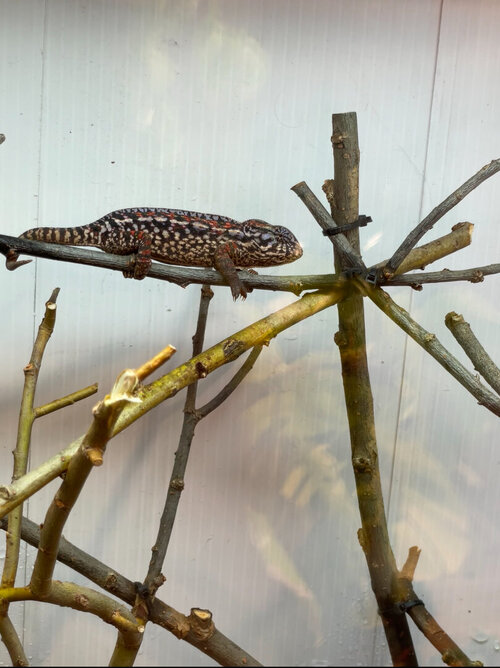king.louis
New Member
Hi, I recently purchased 1 male and 2 female WC Carpet chameleons (unfortunately, there are very few Carpet breeders here in Canada + I wanted completely unrelated genetics to start a breeding project with). I've thoroughly studied Frank Payne's care guide as well as the Chameleon Academy podcasts/interviews which were all very helpful but I had just a few remaining questions that I was hoping I could get answered here.
Many thanks,
Louis
- One of the females seems to be already gravid as she is showing some dark/black coloration. Could someone confirm? (pic attached)
- How long should I let them settle into their new environments before attempting to breed them? All three are eating and drinking regularly.
- I've read that sperm retention is common. Does this mean that even after being bred with a new male, a female with retain the sperm of a previous male and use that to fertilize eggs?
- ie. in a single clutch, is it possible for there to be 2/multiple fathers?
- If I have Chameleons A(f), B(m), C(f), and D(m). If first A breeds with B and C breeds with D and then later, A breeds with D and C breeds with B. Can I breed offspring from the A-D clutch with offspring from the C-B clutch without the risk of inbreeding? (Since A was previously bred with B so she may have retained the sperm from B and some offspring in the A-D clutch may actually have B as the father?)
- How often should a male be bred?
- I've read that for other chameleon species, eggs should be incubated in the dark/in an opaque incubator. Is this true for Carpets as well?
- If so, does frequently opening the incubator to check on the eggs negatively affect them? How often should they be checked on?
- I'm following Frank Payne's recommendations to use a 6% Arcadia for adults; what % would be best for juveniles? 2.4%?
- What size cage should hatchlings/juveniles be kept in? For how long?
Many thanks,
Louis









